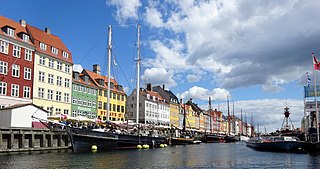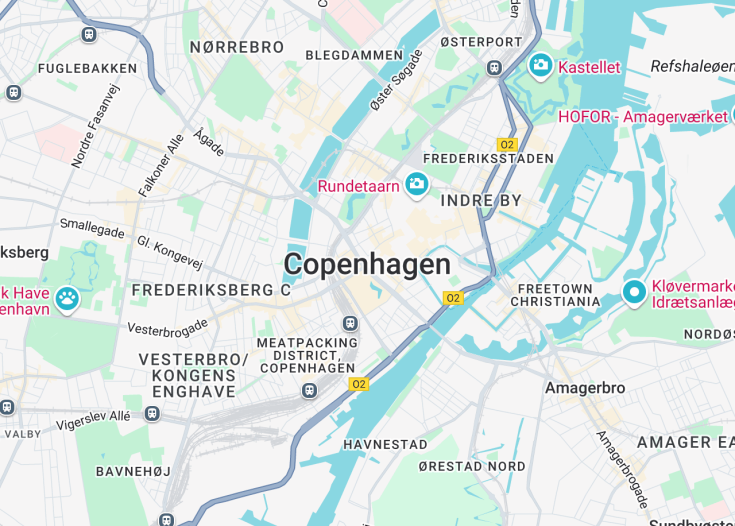Copenhagen, the capital of Denmark, is renowned for its rich cultural heritage, modern architecture, and high quality of life. This picturesque city is set against a backdrop of charming canals, old cobbled streets, and modern design spaces. Visitors can explore historical landmarks such as the iconic Little Mermaid statue, the opulent Amalienborg Palace, and the vibrant Tivoli Gardens. The city also offers a vibrant culinary scene, featuring everything from traditional Danish smørrebrød to gourmet restaurants spearheaded by pioneering chefs. Copenhagen’s commitment to sustainability can be seen in its extensive bike lanes, clean harbors, and eco-friendly public transportation.
When visiting Copenhagen, consider purchasing the Copenhagen Card, which offers free access to many museums and attractions, plus unlimited public transportation.
Explore the city by bike to truly embrace the local lifestyle, and don’t miss the opportunity to relax in one of the many green spaces and waterfront areas.
Top things to do & see in Copenhagen
Select the following sights and activities to discover best tickets and tours available in Copenhagen.
Copenhagen: The Gateway to Scandinavia
| Country | Denmark |
| Time in Copenhagen | GMT+1 |
| Language spoken | Danish |
| Population | 1,336,982 (Statistics Denmark, 2023) |
| Currency | Danish Krone (DKK, kr) |
| Airports |
|
Copenhagen, Denmark’s vibrant capital, is a unique blend of contemporary innovation and historical splendor, making it a leading destination for both tourism and trade. Known for its robust economy and cultural richness, Copenhagen traces its history back to the 11th century. Today, it champions sustainability and quality of life, evidenced by its frequent recognition as one of the world’s most livable cities.
The city’s rich past is displayed through historic landmarks such as the Danish Royal Palaces, and the famous Little Mermaid statue. Copenhagen is also a hub for gastronomy, art, and design—boasting numerous Michelin-starred restaurants and a flourishing scene for modern architecture and furniture design. Its efficient public transportation network, including metros, trains, and bicycles, makes navigating the city both easy and environmentally friendly.
Copenhagen’s significance is further supported by its educational contributions, with prestigious universities and research institutions, making it a center for scientific and academic advancement. Economically, Copenhagen serves as the nerve center for commerce in Scandinavia, home to the Copenhagen Stock Exchange and numerous multinational corporations.
The city also plays host to countless festivals and international meetings, highlighting its status as a cosmopolitan metropolis. Whether it’s through exploring its picturesque cobblestones streets or enjoying its lush green parks, Copenhagen offers a diverse array of experiences that connect visitors with both nature and urban sophistication. This unique blend of old and new, nature and culture, innovation and tradition, makes Copenhagen a must-visit destination on the global map.
Where is Copenhagen?
Copenhagen is located on the eastern coast of Zealand and stretches across parts of Amager in Denmark.
Distances:
| Route | Distance by car | Time by car |
|---|---|---|
| Aarhus to Copenhagen | 187 mi (301 km) | 3 hours, 5 minutes |
| Odense to Copenhagen | 105 mi (169 km) | 1 hour, 50 minutes |
| Alborg to Copenhagen | 262 mi (422 km) | 4 hours, 15 minutes |
What is Copenhagen famous for?
Copenhagen is famed for its historical architecture, green spaces, and as the epicenter of New Nordic cuisine, attracting gastronomy enthusiasts from around the world.
History
The rich tapestry of Copenhagen’s history is as intricate and colorful as the streets of Nyhavn itself. From its humble beginnings as a Viking fishing village to its present status as a vibrant cultural hub, Copenhagen has witnessed myriad transformative moments.
1167-1416: The Founding and Early Growth
Founded in the 12th century by Bishop Absalon on the small island of Slotsholmen, Copenhagen was originally designed as a fortified settlement to protect the burgeoning Danish empire against maritime pirates. Its strategic location on the Baltic Sea fostered trade, and by the late medieval era, it had become one of the most important ports in Northern Europe. The construction of the Copenhagen Castle and city walls during this period laid the foundational stone for the city’s expansion.
1416-1658: The Hanseatic League and Renaissance
During the Renaissance, Copenhagen grew significantly, influenced heavily by the Hanseatic League. The era saw a strong focus on arts, architecture, and education, with the establishment of the University of Copenhagen in 1479, promoting intellectual growth. The iconic Round Tower observatory, symbolizing the city’s scientific pursuits, dates back to this period.
1658-1800: Wars and Reconstruction
Despite being besieged and captured by the Swedes during the Northern Wars, Copenhagen rapidly recovered. The 18th century was marked by major urban planning efforts including the creation of Frederiksstaden, an elegant district that houses the Amalienborg Palace. The city’s resilience was again tested during the British bombardments in the early 1800s, leading to significant architectural and urban developments.
1800-present: Industrialization and Modernization
The industrial era turned Copenhagen into a powerhouse of economic activity, with new neighborhoods expanding beyond the old ramparts. The 20th century highlighted Copenhagen’s inclination towards cultural and environmental sustainability, which continues to this day. The city’s infrastructure saw massive modernization, shaping Copenhagen into a global exemplar of urban planning and design, complemented by its commitment to clean energy and cycling culture.
Visit Copenhagen
What to see and do in Copenhagen, Denmark.
Copenhagen, a city rich with history and modern charm, offers a plethora of attractions and activities for visitors. Discover the historic Rosenborg Castle, home to Denmark’s crown jewels, or take a stroll through the picturesque Tivoli Gardens, one of the world’s oldest amusement parks. The city’s bicycle-friendly streets make it easy to explore offerings like the National Museum of Denmark or the modern art installations at Louisiana Museum of Modern Art. Walk the cobblestone streets of Nyhavn, lined with brightly colored townhouses and cafes, perfect for a waterfront dining experience.
- Explore the historical landmarks such as the Amalienborg Palace and Christiansborg Palace.
- Visit the acclaimed National Gallery of Denmark showcasing a vast collection of Danish and international art.
- Enjoy the vibrant food scene at Torvehallerne food market.
- Take a boat tour around the canals of Copenhagen.
Events in Copenhagen
Copenhagen’s cultural calendar is replete with a variety of events throughout the year. The Copenhagen Jazz Festival, held every July, fills the city with melodies, while the winter months are brightened by the Copenhagen Light Festival. Food enthusiasts gather at the Copenhagen Cooking & Food Festival in August, an event that showcases the culinary scene of the region.
Best time to visit Copenhagen
The best time to visit Copenhagen is during the late spring and summer months from May to August when the weather is pleasantly warm and the city is most vibrant with numerous outdoor activities and festivals. However, those interested in experiencing the charming Christmas markets should consider a visit in late November and December, when the city is festooned with lights and festive décor.
is Copenhagen worth visiting?
Indeed, Copenhagen is well worth a visit for any traveler. This Danish capital combines historical allure and modern design with seemingly effortless grace. It boasts an array of galleries, museums, and historical sights ensuring there is something to fascinate every visitor. Moreover, Copenhagen’s commitment to sustainability and quality of life is evident in its clean streets and efficient public transportation system. Whether it’s the romance of the old city or the pulse of the new, Copenhagen provides a compelling exploration of a living, breathing history intertwined with progressive modern ideals.









